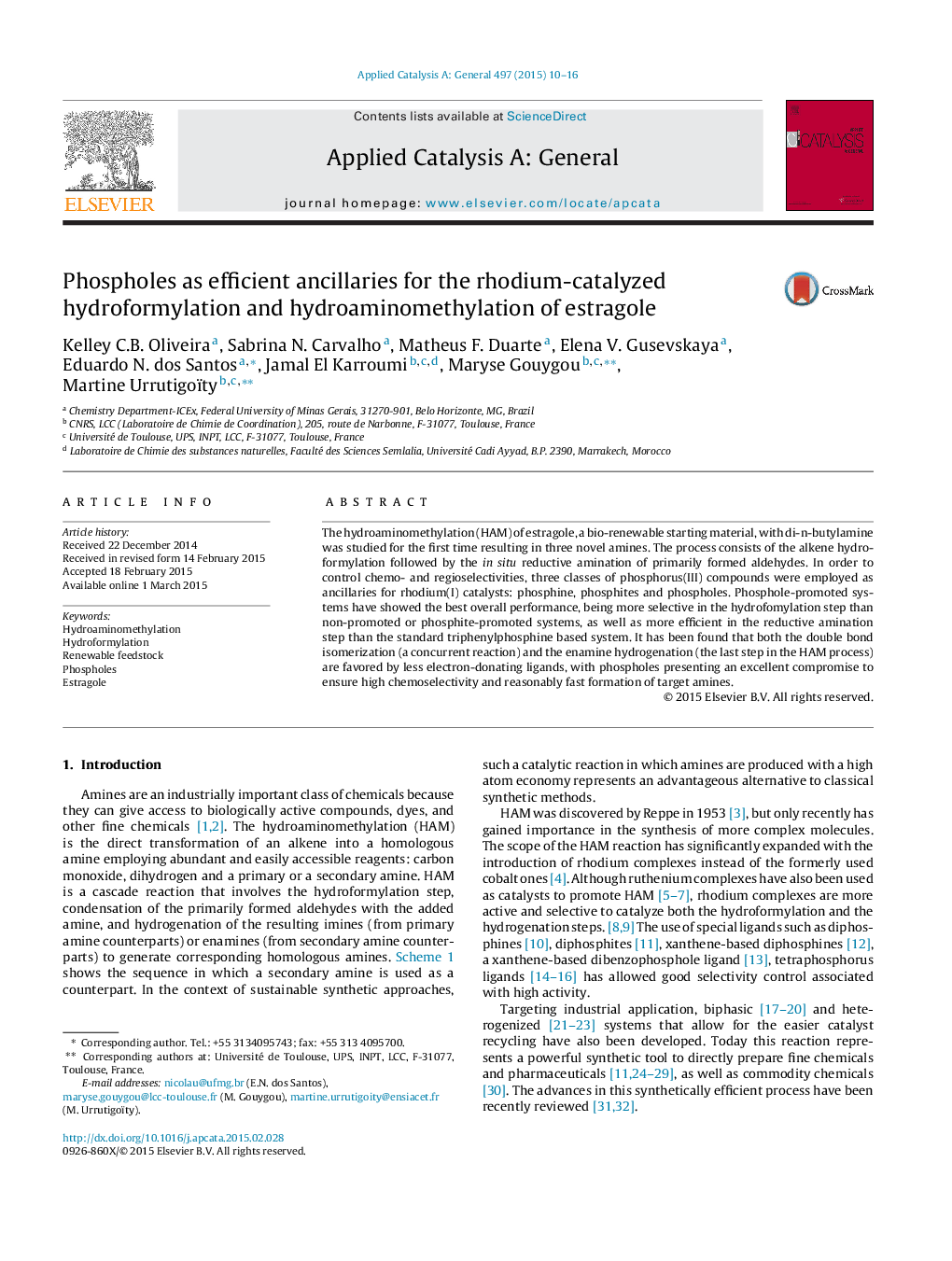| کد مقاله | کد نشریه | سال انتشار | مقاله انگلیسی | نسخه تمام متن |
|---|---|---|---|---|
| 39269 | 45816 | 2015 | 7 صفحه PDF | دانلود رایگان |

• Estragole is a by-product of cellulose industry.
• The hydroformylation of estragole gives perfumery aldehydes.
• The hydroaminomethylation of estragole gives antifungal analogs.
• Monophospholes are efficient ancillaries for Rh-promoted hydroaminomethylation.
The hydroaminomethylation (HAM) of estragole, a bio-renewable starting material, with di-n-butylamine was studied for the first time resulting in three novel amines. The process consists of the alkene hydroformylation followed by the in situ reductive amination of primarily formed aldehydes. In order to control chemo- and regioselectivities, three classes of phosphorus(III) compounds were employed as ancillaries for rhodium(I) catalysts: phosphine, phosphites and phospholes. Phosphole-promoted systems have showed the best overall performance, being more selective in the hydrofomylation step than non-promoted or phosphite-promoted systems, as well as more efficient in the reductive amination step than the standard triphenylphosphine based system. It has been found that both the double bond isomerization (a concurrent reaction) and the enamine hydrogenation (the last step in the HAM process) are favored by less electron-donating ligands, with phospholes presenting an excellent compromise to ensure high chemoselectivity and reasonably fast formation of target amines.
Figure optionsDownload high-quality image (108 K)Download as PowerPoint slide
Journal: Applied Catalysis A: General - Volume 497, May 2015, Pages 10–16